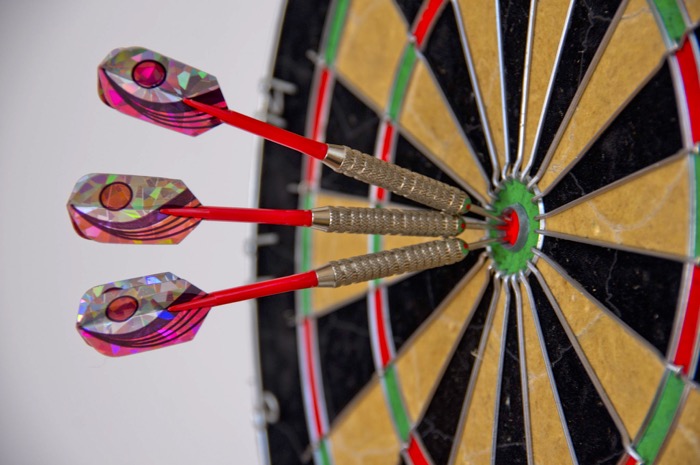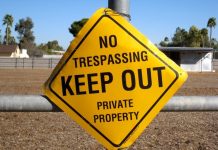
A piece of journalism should have many admirable qualities but one is more important than all the rest: accuracy. Rule Number One is: get it right. If you cannot appreciate and respect that rule, there is no point in going into journalism.
Your first priority in everything you write is accuracy. Every single fact must be correct. If you get even one small detail wrong, why should your audience believe the rest of it?
There must be zero tolerance for mistakes.
Hang on, you say – everybody makes mistakes – to err is human. That’s right. But you must dedicate your career to being an exception.
The consequences of mistakes
There are many powerful reasons for taking an uncompromising attitude towards the need for accuracy. Mistakes can have devastating consequences: you might be sued; you might destroy someone’s reputation; in extreme cases you might trigger social unrest, crash the economy or bring down a government.
On a personal level, when reporting on people, you owe it to them to get every detail of their name, age address and other relevant information absolutely right. To be casual with personal details is to disrespect people and short change your audience.
But whether your mistake is trivial or serious, you will damage the one thing that all news organisations need: the trust of their audience.
News reporting happens under pressure. You need to find the facts quickly, beat the opposition, and get enough information to answer all the questions your audience might have.
But being first with the news is no consolation if you get it wrong- even in a minor way. Getting it right is more important than being first. Time pressure is no excuse for inaccuracy.
Fact checking, context, and records
You must not only be satisfied that all your facts are correct, you must be able to support everything you write with evidence. ‘Knowing’ is not enough. You must prove it.
This means, among other things, being scrupulously careful to keep accurate and legible notes. Whether these are on paper or in electronic form, you should keep them safely.
The best reporters have a place where they keep all their old notebooks, recordings and other evidence, dating right back to the start of their careers. This is for one simple reason: so they can demonstrate they were always accurate.
When you write a story, you own all the content. That means you are responsible for the accuracy of everything in it.
If you referred to archives or the Internet for background information, it is not enough simply to repeat it. You have to check that it is accurate.
If somebody told you something, that does not necessarily mean it is correct. If you have any doubts, you should attribute statements to the people who made them, rather than assert them as facts.
On the day that this article was written, an earthquake happened off the coast of Taiwan. We are able state this as a fact because we have now verified it.
But when the news first came out, the international news agency Reuters reported it this way:
TAIPEI, Dec 18 (Reuters) – A 5.1 magnitude earthquake struck 18 km (11 miles) off eastern Taiwan’s Hualien city on Thursday, the island’s weather administration said, with no immediate reports of damage. The quake briefly shook buildings in the capital, Taipei. The quake had a depth of 31.6 km (19.6 miles), the weather administration said.
Note that Reuters is not itself saying that there has been an earthquake. It is saying that the weather administration in Taiwan has reported an earthquake. This is the careful use of attribution in the early moments of a breaking story when Reuters itself has no other source to confirm that the earthquake happened.
So right from the start of a career in journalism, practice a rigorous approach to accuracy. There are many other important ethical issues to keep in mind, including impartiality, fairness and other considerations.
But everything good in journalism is built on accuracy. Get it right. So, let’s sum up the main considerations for every journalist.
Core principles of accuracy
- Accuracy comes first: Getting it right matters more than being first; time pressure is never an excuse for mistakes.
- Zero tolerance for errors: Even one small inaccuracy undermines the credibility of the whole story and damages audience trust.
- Accuracy underpins all ethics: Impartiality, fairness and other values only have meaning if the reporting is accurate.
Consequences of mistakes
- Errors can have serious effects, including lawsuits, reputational damage, social unrest or even destabilising governments or economies.
- Getting personal details such as names, ages and addresses wrong is disrespectful to people and short‑changes the audience.
Fact‑checking and attribution
- Every fact must be supported by evidence; “knowing” is not enough, you must be able to prove it.
- When using archives or the Internet, never copy or repeat information uncritically; independently verify background material.
- If information cannot yet be verified, attribute it clearly to the source rather than asserting it as fact, especially in breaking news.
Records and responsibility
- Keep careful, legible notes, recordings and other evidence, and store them safely throughout your career.
- Maintaining complete records allows you to demonstrate later that your reporting was accurate if it is challenged.
- You “own” everything in your story, regardless of where it came from, and are responsible for its accuracy.
Everyday practice
- Adopt a rigorous, methodical approach to checking every detail in every story, from the start of your career onwards.
- Treat accuracy as Rule Number One in all reporting decisions: everything good in journalism is built on accuracy.
Final thoughts – making good
And, if you do make mistakes, and we all do from time to time, it’s important to act swiftly.
- Acknowledge: Admit your mistake and tell your editor, if they don’t already know.
- Correct: Work out how to publish the fastest and most effective correction.
- Apologise: In the correction and directly to anyone affected by the error, say you are sorry.
- Analyse: Work out how you got it wrong, learn your lessons and make a vow to yourself never to let this happen again.
Related material








